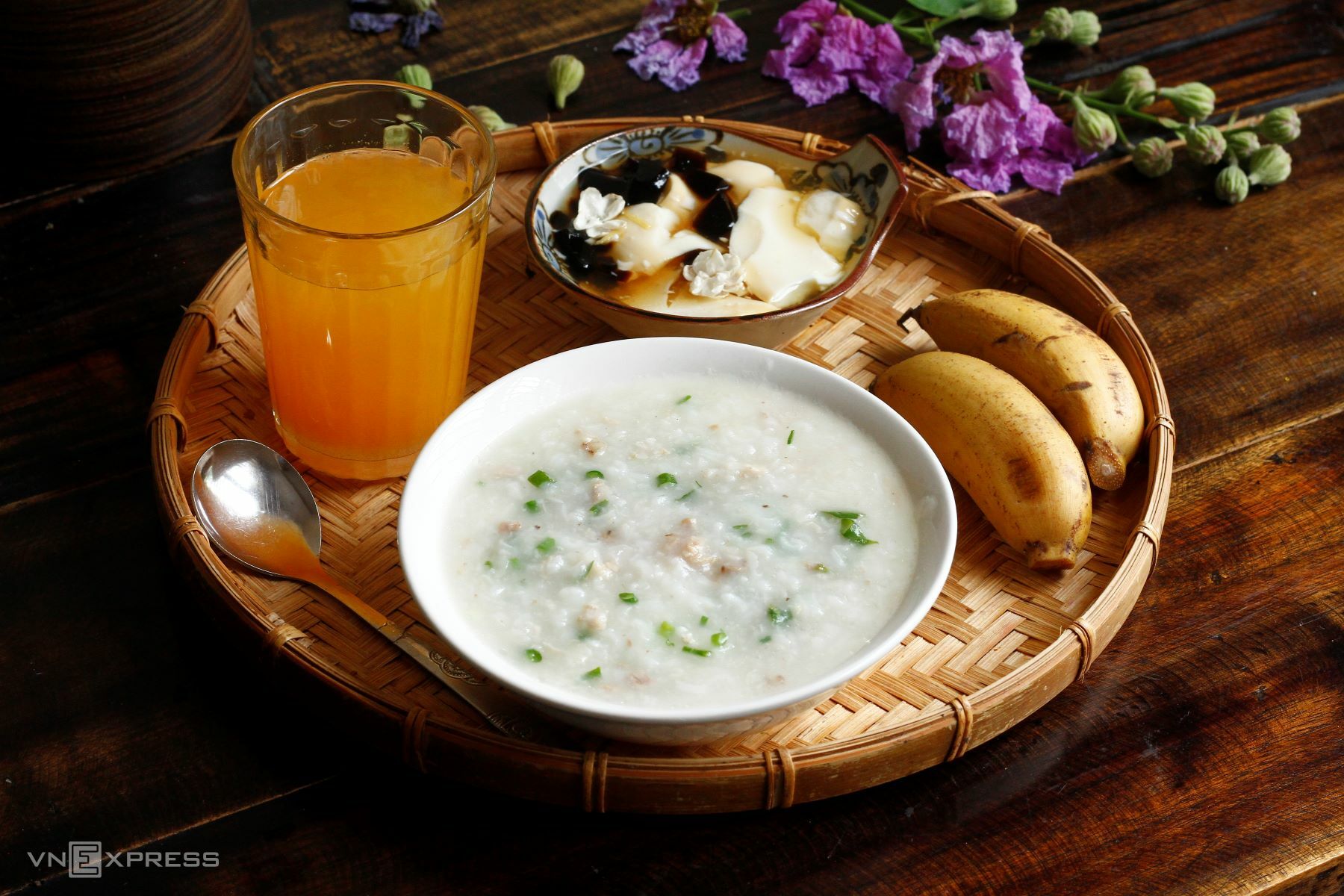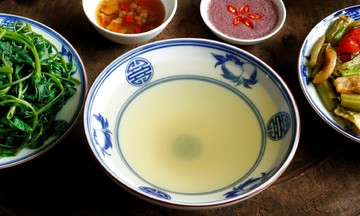Folk wisdom suggests cooking porridge until the grains are cooked but not mushy, adding ginger, onions, and chicken eggs to nourish and warm the body.
In Eastern medicine, porridge is considered a nourishing dish that helps regulate the organs. However, if the porridge is overcooked, eaten cold, or refrigerated, it becomes a "cold" food, weakening the spleen and stomach, slowing digestion, and causing bloating.
For sick or weak individuals with imbalanced yin and yang, porridge should be warm, lightly seasoned, soft, and not overcooked or too watery.
From a digestive perspective, eating overcooked porridge eliminates the need for chewing. While seemingly convenient, this bypasses a crucial digestive step: stimulating saliva production. Chewing prompts the salivary glands to release amylase, an enzyme that breaks down starch in the mouth. Skipping this step burdens the stomach and small intestine, leading to bloating and poor absorption, especially in older adults or those with weak digestive systems.
Scientifically, prolonged cooking at high temperatures completely gelatinizes the starch in rice, rapidly increasing blood sugar levels but not sustaining them. This can lead to hunger after a few hours, while inefficient stomach contractions hinder enzyme activity and the processing of other nutrients like protein and fat.
 |
Illustrative photo: Bui Thuy |
A 2024 study published in PubMed Central by MARA University of Technology, Malaysia, indicates that traditional rice porridge, when cooked to a moderately thick consistency with the grains cooked but still retaining their structure, promotes efficient starch and protein absorption. This type of porridge also increases satiety compared to watery, overcooked porridge, without causing bloating.
This challenges the notion that watery porridge is easier to digest, especially for the elderly or those recovering from illness.
Furthermore, according to nutrition experts at the University of San Diego, USA, rice porridge has long been considered a nourishing food due to its ability to soothe the digestive system and aid recovery. Properly cooked porridge, with a moderate softness and grains cooked but not mushy, combined with warming ingredients, benefits the spleen and stomach and supports digestion. Conversely, consuming only plain, watery porridge for extended periods without supplementing with protein or healthy fats can lead to nutrient deficiencies, fatigue, and slower recovery.
So, what is the correct way to cook porridge for the sick?
Nutritionists recommend a ratio of approximately 1 part rice to 8-10 parts water, cooked until the grains are soft and the porridge slightly thick, but not mushy.
Porridge should be eaten warm, in small portions throughout the day, combined with easily digestible proteins like minced meat, fish, chicken eggs, and soft vegetables. Adding spices like onions, ginger, or pepper can aid digestion and provide warmth. Avoid reheating multiple times to ensure food quality and hygiene.
Nutrition for the sick is not solely about the softness of the food, but also its ability to support digestion, recovery, and boost immunity. A proper bowl of porridge should be sufficiently soft, warm, protein-rich, and nutritious, acting like a remedy to restore energy.
Bui Thuy












